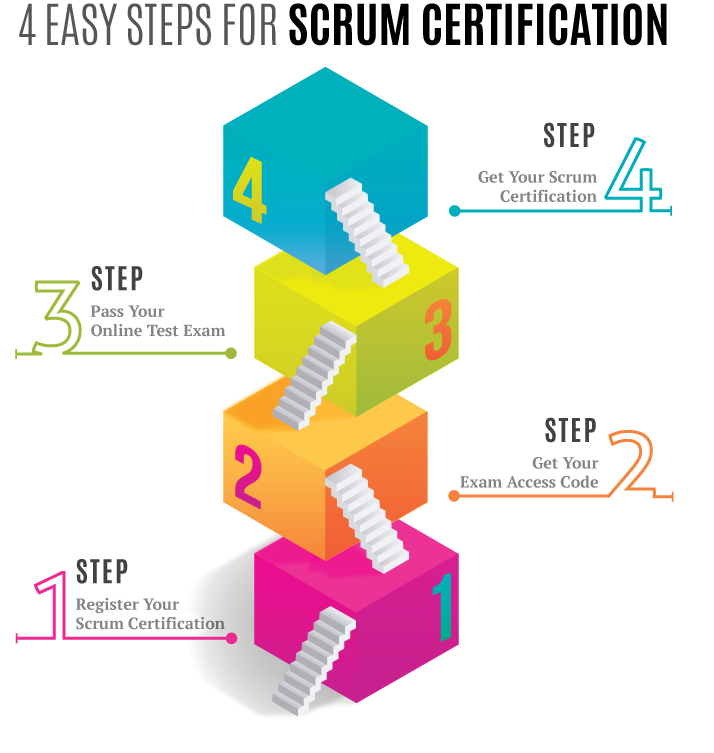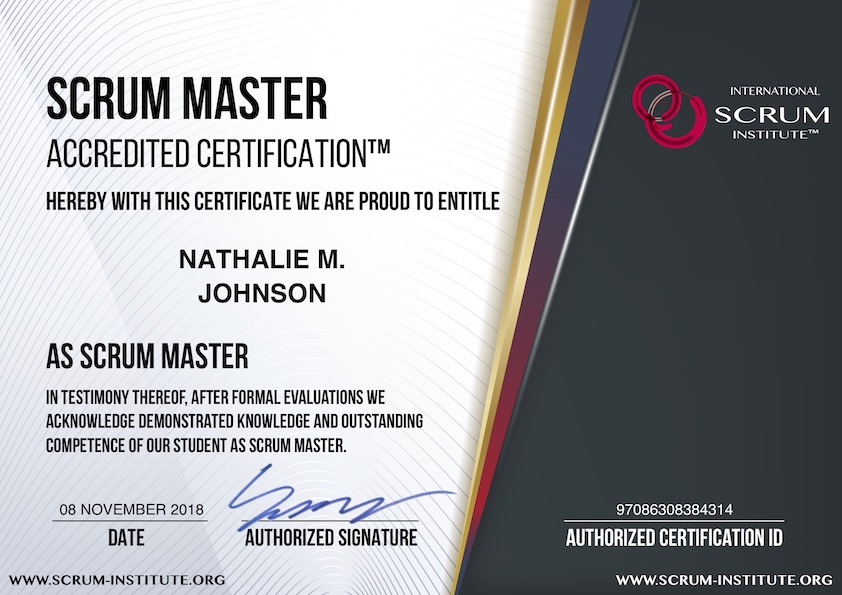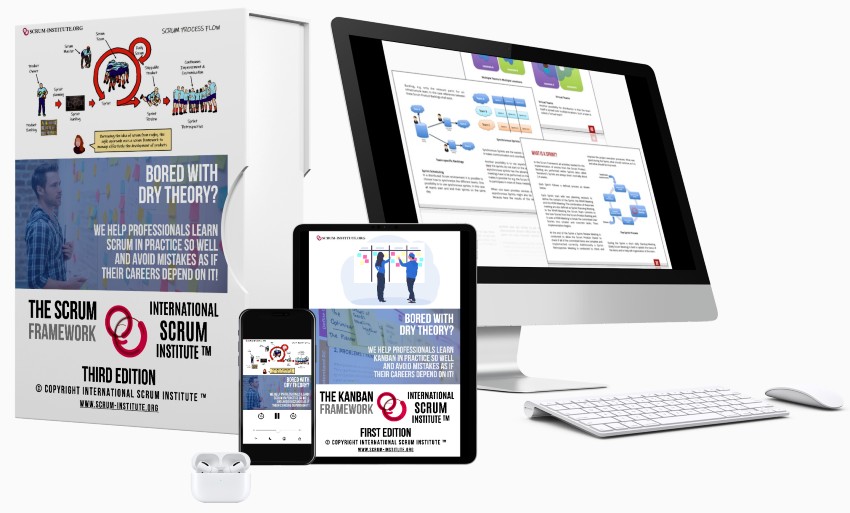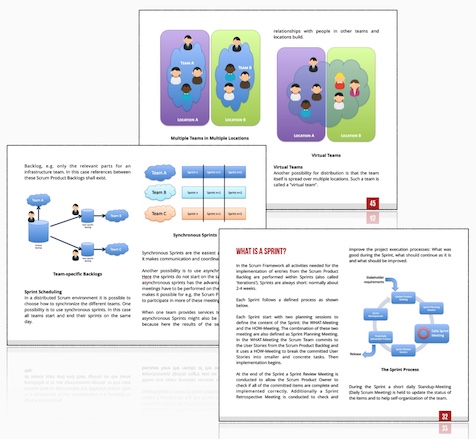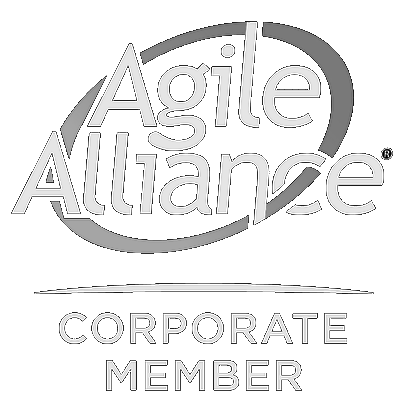Scrum Sprint Retrospective Meetings:
Goals and Best Practices
A Scrum Sprint Retrospective Meeting serves as a mirror, reflecting the team's performance in the past sprint. It shines light on both their triumphs and crashes, aiding in identifying stepping stones for the coming challenges. However, conducting these meetings is not a walk in the park. It requires a blend of good preparation, clear communication, and the embracing of constructive feedback. You'll soon understand why proper preparation makes all the difference.
The primary goals of a Scrum sprint retrospective meeting include reflecting on the completed sprint, identifying areas of improvement, and fostering continuous process enhancement. Best practices for these meetings involve reviewing closed issues, discussing open issues, and creating actionable items with high value to drive tangible improvements in future sprints.
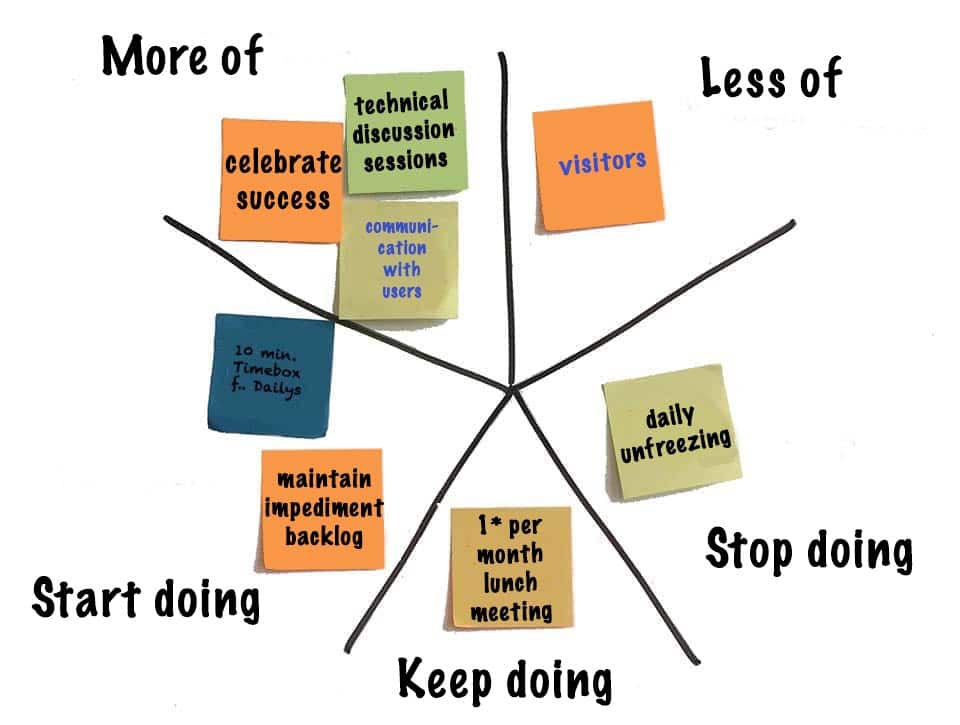
Scrum Sprint Retrospective Meeting
Scrum Sprint Retrospective Meeting Goals
The Scrum Sprint Retrospective Meeting is a crucial part of a team's continuous improvement cycle. By providing a dedicated space for reflection and candid feedback, the meeting serves as an essential tool for enhancing team performance and fostering a culture of open communication and collaboration.
During the meeting, the team primarily focuses on three fundamental objectives:
- Reflecting on the previous sprint: This stage involves examining the completed sprint in detail, identifying both positive and negative aspects. The goal here is to analyze what went well and what didn't during the sprint, allowing the team to build upon successes while addressing areas that require improvement.
- Identifying actionable steps for improvement: After reflecting on the past sprint, the team collaboratively brainstorms and formulates specific, actionable steps to address any issues or challenges that were identified. This proactive approach empowers the team to implement concrete improvements in subsequent sprints.
- Fostering a culture of continuous improvement: Throughout the meeting, an overarching objective is to cultivate a mindset of continual growth and advancement within the Scrum team. By acknowledging both achievements and setbacks and actively pursuing strategies for enhancement, the team fosters a culture in which learning and progression are integral to its ethos.
These objectives aren't just arbitrary goals; they form the backbone of the retrospective meeting's purpose. They fuel progress, drive innovation, and strengthen teamwork.
Reflecting on achievements and setbacks helps the team figure out what works well and what doesn't. Perhaps certain practices yielded outstanding results, while others need refinement or even replacement. Without identifying these patterns through reflection, progress could stall, hindering overall productivity.
Why These Scrum Sprint Retrospective Objectives Matter
These objectives hold immense significance in driving meaningful change within the Scrum team and positively impacting project outcomes.
1) Reflecting on the Previous Sprint
Reflecting is essential for growth. By examining past experiences, whether successful or challenging, teams can gain valuable insights that inform future strategies. It's like taking a step back to gain clarity before taking another step forward.
2) Identifying Actionable Steps for Improvement
Team members come together to identify specific actions that can lead to tangible improvements in subsequent sprints. This collaborative approach fosters ownership and accountability among team members in driving positive change.
3) Fostering a Culture of Continuous Improvement
Continuous improvement isn't just about making things better; it's about excelling over time. By integrating this goal into the very fabric of the team's dynamic, it ensures that initiatives for growth aren’t one-off endeavors but integral components of ongoing development.
Understanding these core objectives provides a solid foundation for maximizing the impact of Scrum Sprint Retrospective Meetings. Each objective contributes to creating an environment where insights are leveraged into actionable strategies for enhancement, ultimately propelling the team towards increased productivity and product excellence.
With a clear understanding of how retrospective meeting objectives drive meaningful change within a Scrum team, let's now focus on effective strategies for preparing for a successful meeting.
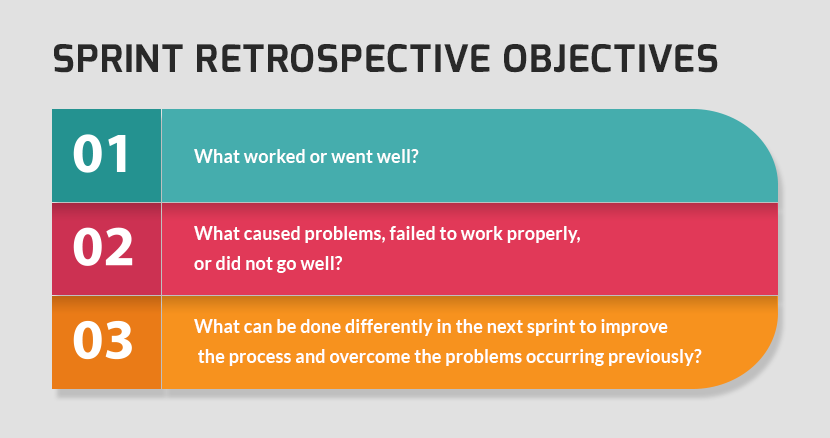
Scrum Sprint Retrospective Meeting Objectives
Preparing for a Successful Sprint Retrospective Meeting
A successful Scrum Sprint Retrospective Meeting goes beyond just assembling everyone in a room to discuss the ups and downs of the sprint. To elevate it from a routine meeting to an opportunity for meaningful reflection and improvement, proper preparation is essential. The goal is to create an environment that cultivates open and candid dialogue, where team members feel at ease sharing their perspectives.
To foster this environment, it's imperative to set up a physical space that promotes engagement and creativity. Consider arranging chairs in a circle rather than rows, as this layout can encourage a more inclusive atmosphere where everyone feels they have an equal say. Additionally, incorporating visual aids such as whiteboards or digital boards can prompt more involvement and interaction during the discussion.
Gathering Data and Feedback
Before the meeting commences, collecting data and feedback from team members is crucial. This includes gathering both qualitative and quantitative information about the sprint.
Qualitative information might encompass individual experiences, challenges faced, achievements made, and suggestions for improvement. Such feedback offers valuable insights into the emotions and experiences of team members during the sprint. On the other hand, quantitative data could originate from project management tools that track sprint performance, completed story points, closed issues, and other relevant metrics. This quantitative data provides an objective view of the team's overall performance during the sprint.
It's vital to compile this data beforehand so that everyone has access to it during the retrospective meeting. Having this information readily available can guide the discussion and provide concrete examples to support insights and recommendations.
By creating an atmosphere that nurtures participation and ensuring that all necessary data is collected in advance, you are laying the foundation for a successful and productive Scrum Sprint Retrospective Meeting.
Best Practices for Productive Scrum Sprint Retrospective Meetings
When optimizing a sprint retrospective, it's crucial to establish best practices that cultivate an environment where the entire team can communicate openly and make meaningful progress. Here are some key approaches to consider:
Time Management
Effective time management ensures that meaningful discussions take place without dragging on. A common pitfall in retrospective meetings is that discussions can veer off-topic or become prolonged, inhibiting productivity. To address this, allocate a specific time for each agenda item to keep the meeting focused and ensure all topics are addressed efficiently.
By acknowledging the value of everyone’s time and adhering to a predetermined schedule, participants can engage more effectively in discussion without feeling rushed or frustrated due to overly extended conversations. A structured approach to time management also facilitates a sense of purpose within the meeting, enabling the team to address pressing concerns while maintaining a healthy cadence throughout the session.
Encourage Open Communication
Open communication is crucial in fostering an environment where team members feel comfortable sharing their perspectives, insights, and concerns openly. By creating a safe and non-judgmental space, participants are empowered to voice their thoughts without fear of retribution or criticism.
This encourages transparency and active participation from all team members, ultimately leading to more actionable insights and collaborative problem-solving. Furthermore, it nurtures trust and respect within the team, which is essential for maintaining healthy working relationships and nurturing a positive team culture.
Embracing these best practices promotes a constructive and inclusive atmosphere where team members are motivated to engage meaningfully in discussions, contribute valuable input, and collectively drive continuous improvement. This not only enhances the effectiveness of sprint retrospectives but also strengthens team cohesion by fostering an environment conducive to open communication and productive collaboration.
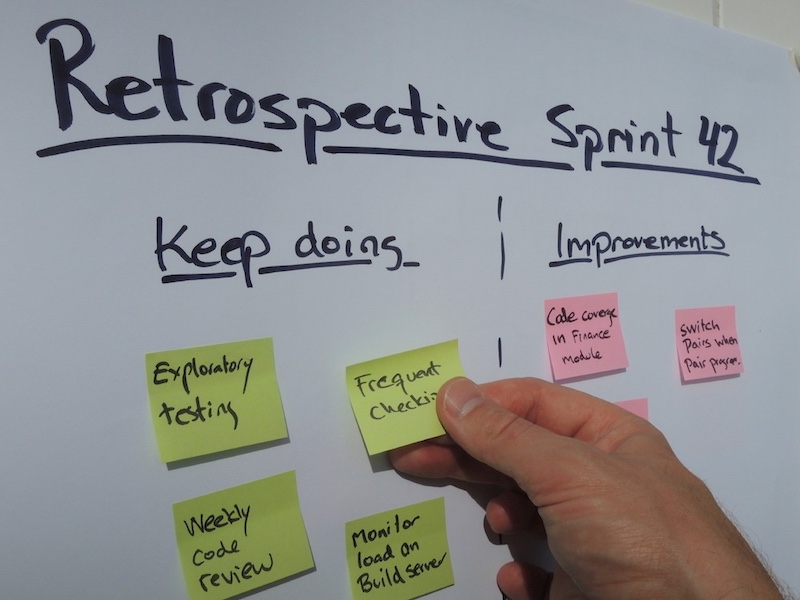
Scrum Sprint Retrospective Meeting Board
Facilitating Open Discussion and Active Participation
Creating a safe and welcoming space for open discussion is key to the success of any retrospective meeting. Teams should feel free to express their opinions and propose improvements without fear of judgment. To achieve this, as a Scrum Master, you can incorporate various strategies to encourage collaboration and participation.
Psychological safety plays a crucial role in fostering open discussions. When team members feel psychologically safe, they are more likely to voice their concerns and ideas without the fear of negative consequences. As a facilitator, you must ensure that everyone feels respected and valued, regardless of their position within the team.
Moreover, leveraging icebreaker activities can help set the tone for a positive and relaxed atmosphere, allowing team members to ease into the discussion. Icebreakers can be simple yet effective, such as asking each participant to share a personal or professional highlight since the last retrospective. This not only encourages active participation but also fosters a sense of camaraderie among team members.
Scrum Retrospective Icebreaker Activity Example:
"Share one thing you learned during this sprint that surprised you or made your work easier."
Furthermore, using visual aids during the retrospective can significantly enhance the quality of discussions. Visual aids such as whiteboards or digital collaboration tools can help illustrate points, making discussions more engaging and insightful. Visual representations of data or process flows enable participants to grasp concepts more effectively, leading to more productive conversations.
For instance, a whiteboard session where team members sketch out the workflow for a recent project can highlight bottlenecks or inefficiencies that may not have been as evident through verbal discussion alone. This interactive approach fosters deeper engagement and encourages active involvement from all participants.
By incorporating these strategies, you can create an environment where every team member feels heard and valued, ultimately leading to more actionable insights and meaningful improvements during the sprint retrospective meetings.
Incorporating these practices ensures that your sprint retrospective meetings are not only productive but also foster a culture of open communication, collaboration, and continuous improvement within your agile team.
Techniques for Prioritizing Improvement Ideas
In the hustle and bustle of a sprint retrospective, it can be challenging to determine which improvement ideas to focus on. This is where prioritization techniques come into play; they help the team identify the most critical areas for improvement and select feasible solutions for implementation.
Dot Voting:
One effective technique is dot voting, which provides a structured way for team members to voice their opinions and prioritize improvement ideas. Each member is given a limited number of dots (votes) that they can distribute among the proposed ideas. This method encourages collaboration and allows every team member to have a say in highlighting the most crucial areas for implementation.
Impact-Effort Matrix:
Another valuable tool is the impact-effort matrix, which categorizes improvement ideas based on their potential impact and the effort required for implementation. By plotting improvement ideas on this matrix, the team can visualize which ideas offer high impact with minimal effort, helping them identify quick wins and long-term strategies.
Utilize dot voting to prioritize improvement ideas by allowing team members to distribute a limited number of dots among the proposed ideas, identifying the most crucial ones for implementation.
Imagine this scenario: Your team identifies several areas for improvement, such as enhancing code review processes, improving communication tools, and refining task estimation accuracy. Instead of getting sidetracked by numerous ideas, dot voting enables your team to focus on a few high-value action items that hold the most significance for immediate implementation. It's like collectively choosing where to invest your energy for maximum impact.
These prioritization techniques not only streamline the decision-making process but also empower teams to select impactful and achievable improvement ideas for enhancement in future sprints.
As teams navigate through the intricate world of sprint retrospectives, gaining insights and identifying opportunities for growth is just one part of the equation. Let's now transition to exploring how progress is tracked and change is implemented through strategic measures in agile environments.
Tracking Progress and Implementing Change
It's not sufficient to just jot down a list of things to change during your sprint retrospective meeting. The real magic happens when those identified action items are translated into concrete tasks with clear owners and deadlines for implementation. This marks the birth of a carefully crafted plan designed to elevate your team's performance.
Each action item must be meticulously documented, specifying the exact steps that need to be taken, who is responsible for each task, and when they need to be completed. Assigning these tasks ensures accountability and empowers team members to take ownership of the changes.
By setting clear deadlines for their implementation, the team gets a realistic timeline within which to effect change. This elevates their sense of urgency and helps prevent protracted, indefinite timelines which can lead to unmet objectives.
| Task | Responsible Team Member | Deadline |
|---|
| Code refactoring | John | 15th May |
| Improve unit tests | Sarah | 20th May |
| Align with contacts from business units | Anna | 22nd May |
Follow-Up
This part perhaps may not get as much attention as it should. It’s one thing to agree on changes, but another thing entirely to make sure they're being put in place and are actually making improvements.
Regularly reviewing progress on identified action items ensures that the agreed-upon changes are being effectively implemented. It provides an opportunity to detect any potential obstacles early on, allowing for timely intervention to keep things on track. Furthermore, assessing the impact of these changes on subsequent sprints provides valuable insights into their effectiveness. This data-driven approach allows the team to refine their processes with evidence-based adjustments, leading to incremental improvements over time.
Some teams might argue that follow-ups feel like unnecessary micromanagement. However, it's important to recognize that regular checks aren't about monitoring individual productivity; rather, it's about ensuring collective progress towards the common goal of improvement.
In agile methodologies like Scrum, tracking progress on actionable tasks and fostering a culture of continuous improvement through rigorous follow-ups are crucial for sustaining enhanced performance over time.
In conclusion, by diligently tracking progress and implementing change in line with best practices, teams create a pathway for continuous improvement and sustained success in their sprint retrospective meetings.
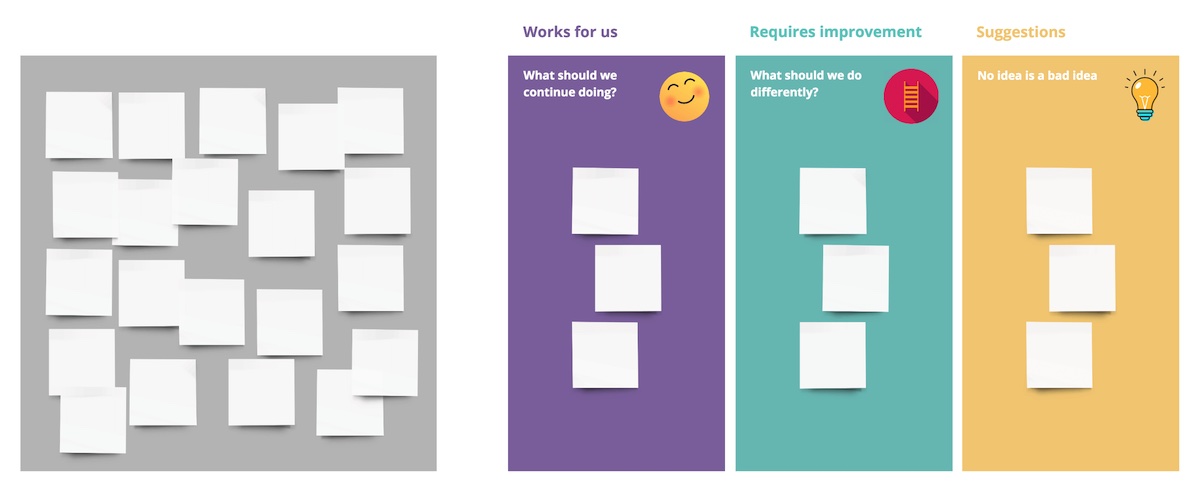
Scrum Sprint Retrospective Meeting Process
Frequently Asked Questions and Answers about Scrum Sprint Retrospective Meetings
What is the purpose of a Scrum sprint retrospective meeting?
Answer: The purpose of a Scrum sprint retrospective meeting is to reflect on the sprint that just ended and identify areas for improvement. By using this meeting as a platform for inspection and adaptation, the team can learn from their successes and failures, and continuously enhance their performance. According to a study by McKinsey, teams that regularly hold retrospectives are 14% more likely to achieve their project goals compared to teams that don't conduct retrospectives.
How can a Scrum team effectively identify and discuss areas for improvement in a retrospective meeting?
Answer: In a Scrum sprint retrospective meeting, a team can effectively identify and discuss areas for improvement by using various techniques such as the Start, Stop, Continue method, the Sailboat retrospective, or the Four Ls retrospective. These techniques encourage open communication, enable the team to reflect on their performance and identify strengths and weaknesses, and promote collaboration in finding solutions and implementing improvements. According to a study conducted by McKinsey & Company, agile teams that regularly conduct retrospectives have shown an average increase in productivity by 15% compared to teams that do not prioritize this practice.
What are some common challenges that teams face during a sprint retrospective and how can they be addressed?
Answer: Some common challenges that teams face during a sprint retrospective include lack of participation from team members, focusing on blame rather than learning, and difficulty in implementing action items. To address these challenges, it is important to ensure everyone's active participation by creating a safe environment for open communication. Encouraging a focus on improvement rather than blaming individuals helps in fostering a positive and collaborative atmosphere. Additionally, setting realistic and measurable action items with assigned responsibilities increases the chances of successful implementation. According to a survey conducted by International Scrum Institute, teams that actively address these challenges have reported higher satisfaction and productivity levels during retrospectives.
Are there any specific techniques or activities that can be used to facilitate a productive retrospective meeting?
Answer: Yes, there are several techniques and activities that can be used to facilitate a productive retrospective meeting. One popular technique is the "Start, Stop, Continue" exercise, where participants identify what actions or behaviors they should start doing, stop doing, or continue doing in future sprints. This helps teams reflect on their past performance and make actionable plans for improvement. Another effective activity is the "Five Whys" exercise, which involves asking iterative "why" questions to explore the root causes of problems and find possible solutions. According to a study by the Scrum Institute, teams that regularly use these techniques report higher levels of team collaboration (80% increase) and productivity (60% increase).
How can the outcomes of a sprint retrospective be used to drive continuous improvement within an Agile team?
Answer: The outcomes of a sprint retrospective can be used to drive continuous improvement within an Agile team by identifying and addressing areas for improvement. Through open and honest communication, the team can analyze what went well, what could have been done better, and how to implement changes in the future sprints. By making these adjustments, teams can increase their efficiency, productivity, and overall quality of work. According to a survey conducted among Agile teams, 82% reported that implementing improvements based on sprint retrospectives had a positive impact on their team's performance and satisfaction.
What is a scrum sprint retrospective?
Answer: A Scrum sprint retrospective is a regular meeting held at the end of each sprint, providing a platform for the Scrum Team, including developers and product owners, to reflect on the recently completed iteration. During the retrospective, people openly discuss ways to enhance teamwork, communication, and processes. It serves as a collaborative knowledge-sharing session, fostering continuous improvement by addressing challenges and identifying opportunities for refining the development process.
What are the benefits of conducting a sprint retrospective?
Answer: Conducting a sprint retrospective in the Scrum framework provides several benefits. Firstly, it fosters improved interactions among Scrum teams, product owners, and stakeholders, promoting transparency and collaboration. Secondly, it aligns with agile principles by emphasizing continuous improvement, allowing teams to reflect on past events and adjust their processes accordingly. Lastly, it serves as a key event within the Scrum framework, facilitating the evaluation of product backlog items and enhancing the overall efficiency and effectiveness of the development process.
What are some common challenges faced during a sprint retrospective?
Answer: During a sprint retrospective, common challenges may arise in the ability of the team to effectively communicate with the product owner and align on priorities. Resource constraints can impede the team's capabilities, impacting their capacity to meet sprint goals. Adhering to established methods and guidelines can be a challenge, requiring continuous refinement to enhance overall retrospective effectiveness.
What are the key objectives of a scrum sprint retrospective?
Answer: The key objectives of a Scrum sprint retrospective are to foster continuous improvement by providing a dedicated space for the team to reflect on the just-concluded sprint, identify what went well, and pinpoint areas for enhancement. It aims to facilitate open communication among team members, encouraging them to share insights and feedback to enhance collaboration and efficiency. Additionally, the retrospective serves as a forum to refine processes, address challenges, and make adjustments to ensure a more successful and productive next sprint.
What are some effective techniques for facilitating a productive retrospective meeting?
Answer: To enhance the effectiveness of a retrospective meeting, prioritize creating a safe and open environment where team members feel comfortable sharing their thoughts and experiences. Encourage focused discussions on specific aspects of the project, such as successes, challenges, and areas for improvement. Implement structured frameworks like the "What Went Well, What Could Be Improved, and Action Items" model to guide the retrospective conversation and ensure actionable insights are derived.
What types of insights and feedback should be gathered during a sprint retrospective?
Answer: During a sprint retrospective, teams should gather insights and feedback on the effectiveness of their collaboration and communication processes. They should also focus on identifying any obstacles or challenges faced during the sprint and explore potential improvements. Additionally, gathering feedback on the overall team morale and satisfaction can provide valuable insights into the team's well-being and potential areas for enhancement.
What is the ideal duration for a scrum sprint retrospective?
Answer: The ideal duration for a Scrum sprint retrospective is typically between two to three hours, with the specific length depending on the team's size and the complexity of the project. It's crucial to allocate enough time for open discussion and reflection on the sprint, allowing team members to share feedback and propose improvements. A balanced retrospective duration ensures a comprehensive review without becoming overly time-consuming.
What role does the scrum master play in a sprint retrospective?
Answer: The Scrum Master facilitates the Sprint Retrospective by guiding the team in reflecting on the previous sprint's processes and outcomes. They encourage open communication and collaboration among team members to identify areas for improvement. The Scrum Master also helps the team create action items and ensures that the retrospective leads to tangible changes in the next sprint.
What role does the scrum product owner play in a sprint retrospective?
Answer: During a sprint retrospective, the Scrum Product Owner typically participates as an observer, providing valuable insights into the product's long-term vision and strategic goals. While not actively involved in the day-to-day details of the sprint, the Product Owner may offer perspectives on how the team's work aligns with overall product objectives. Their input can help foster a holistic understanding of the sprint's impact on the product's trajectory and facilitate collaboration between the development team and stakeholders.
What are some best practices for implementing action items identified during a sprint retrospective?
Answer: After a sprint retrospective, it is essential to prioritize action items based on their impact and feasibility. Assign clear responsibilities to team members to ensure accountability and follow through. Regularly revisit and assess the progress of action items in subsequent retrospectives to foster continuous improvement.
What is the difference between a sprint review and a sprint retrospective?
Answer: A sprint review is a collaborative meeting held at the end of a sprint where the development team demonstrates the completed work to stakeholders, seeking feedback. In contrast, a sprint retrospective is a reflective session where the team discusses the recently concluded sprint, focusing on what went well, what could be improved, and how to enhance their processes in the future. While the sprint review involves stakeholders and focuses on the product increment, the retrospective is an internal team discussion centered on continuous improvement.
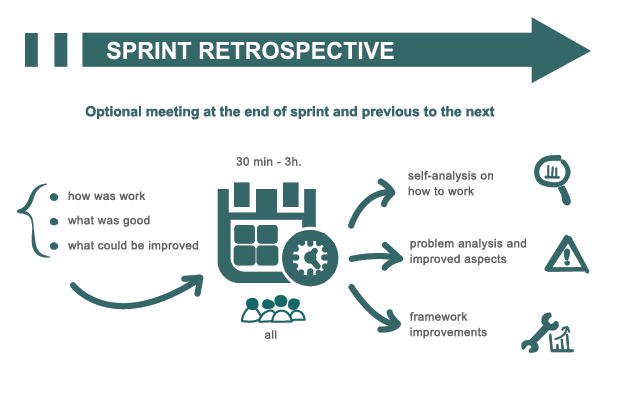
Scrum Sprint Retrospective Meeting Summary
Recap for Scrum Sprint Retrospective Goals and Best Practices
In the world of Scrum Sprint Retrospectives, our primary goal is continuous improvement. It's not just about reflecting on what went well or what could have been better; it's about fostering a culture of collaboration and adaptability. By regularly evaluating our processes and interactions, we pave the way for growth and refinement.
Best practices in Scrum Sprint Retrospectives revolve around open communication and a willingness to embrace change. Encourage team members to share their insights without fear of judgment, and celebrate successes as well as challenges. This creates a space for collective learning and reinforces the idea that improvement is a collective effort.
As you navigate the dynamic landscape of Scrum, remember that the journey doesn't end with one retrospective. It's an ongoing exploration. Keep learning, stay curious, and evolve with each sprint. To aid you on this journey, the International Scrum Institute offers a free Scrum Framework book. Dive into it, explore the depths of Scrum, and let knowledge be the wind in your agile sails.
Share It With Your Colleagues and Friends to Help Them Learn:
Scrum Sprint Retrospective: Goals and Best Practices
|
|

|

|

|

|
|
 SCRUM INSTITUTE™
SCRUM INSTITUTE™





